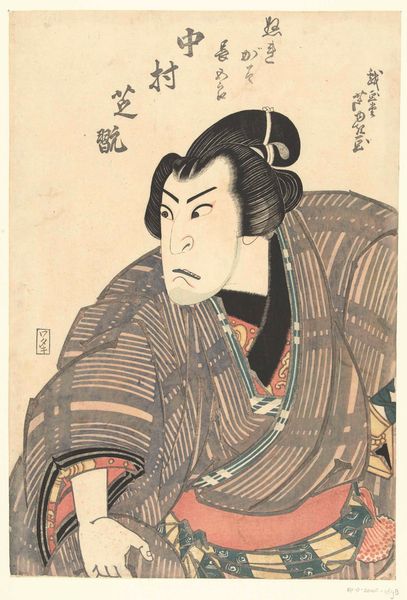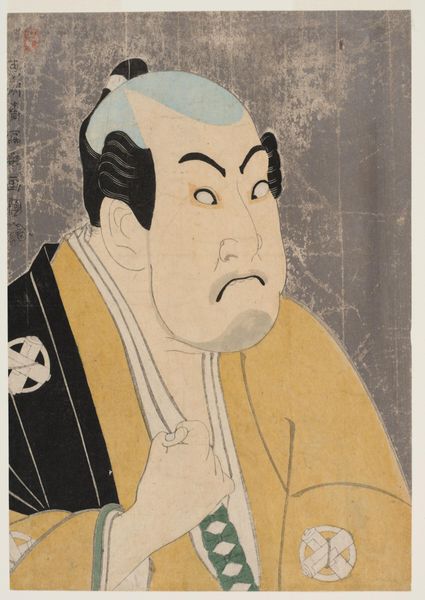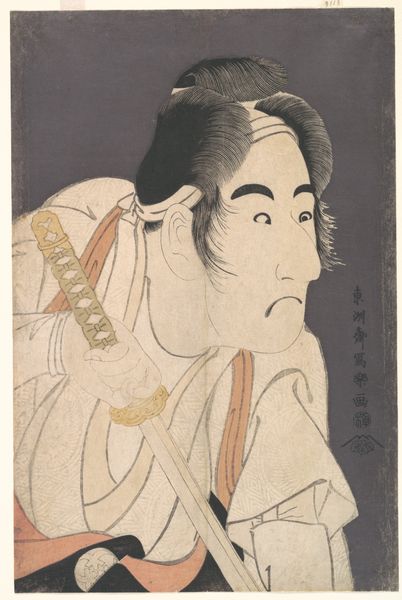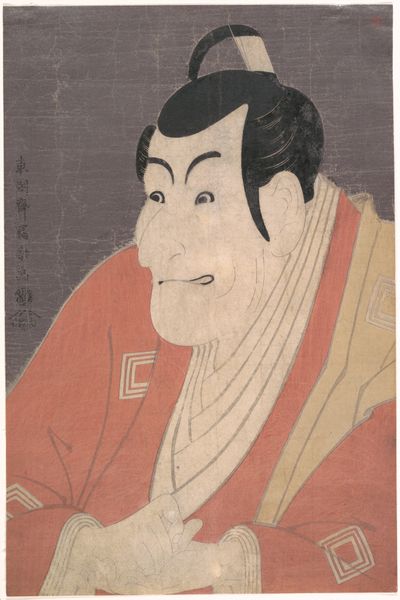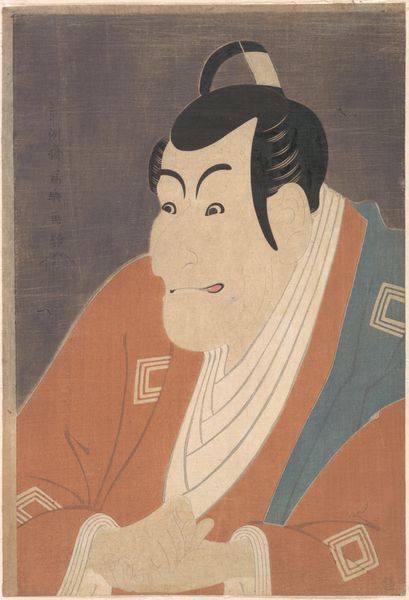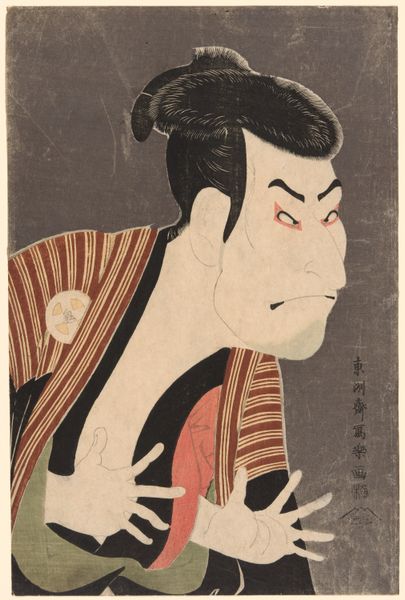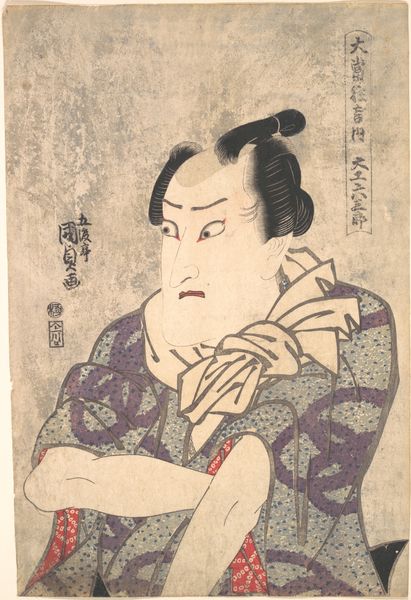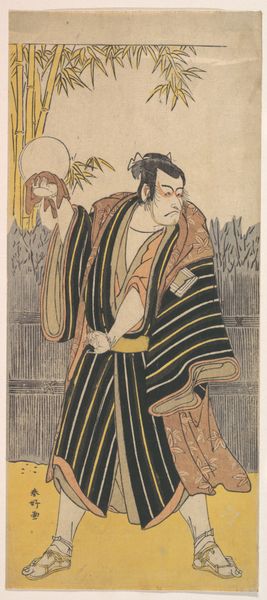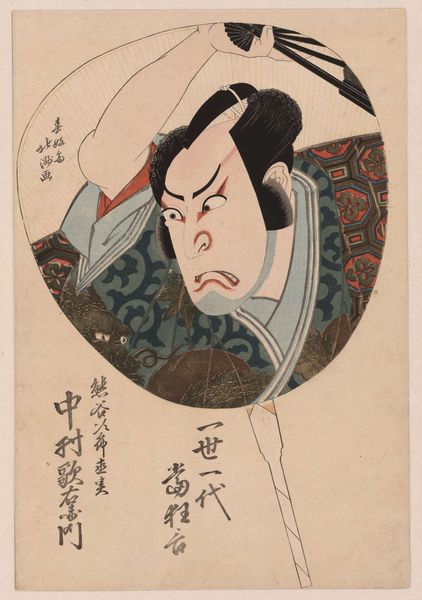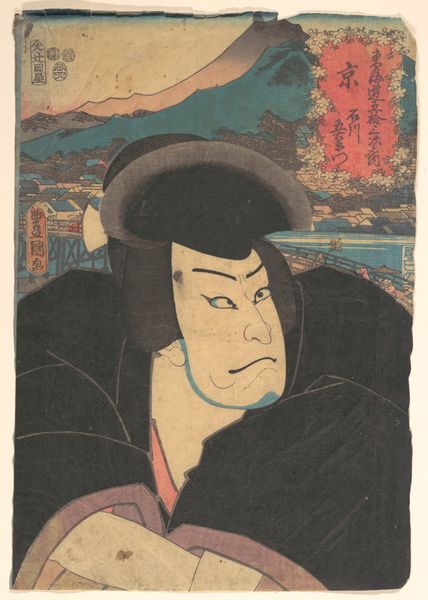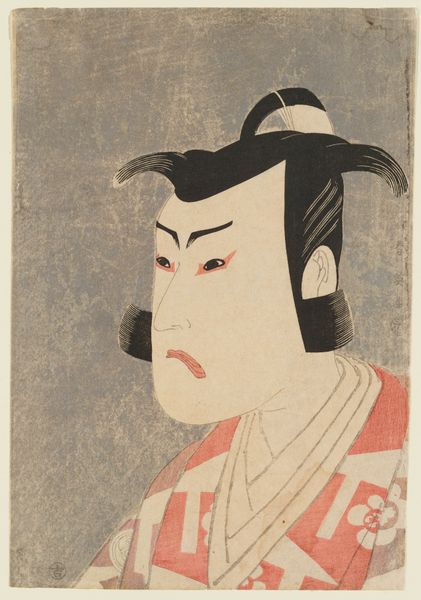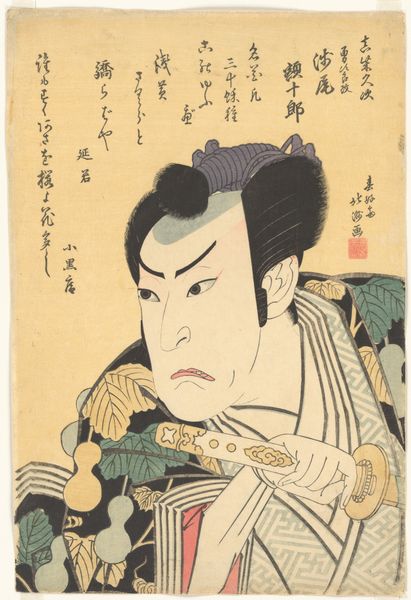
print, ink, woodblock-print
#
portrait
#
toned paper
# print
#
caricature
#
asian-art
#
caricature
#
ukiyo-e
#
ink
#
woodblock-print
Dimensions: 12 15/16 × 5 13/16 in. (32.9 × 14.8 cm) (image, sheet, hosoban)
Copyright: Public Domain
Curator: Here we have Katsukawa Shun'ei’s woodblock print, dating from around 1791 to 1793, titled "Actor Ichikawa Monnosuke II". It’s part of the Ukiyo-e tradition, and the craftsmanship is remarkable. Editor: My first impression is…intriguing. The figure exudes a very specific mood, almost a pensive seriousness. I’m drawn to the bold lines defining his features, the high color on his brow bone, the downward cast of the eyes. Curator: Absolutely. The woodblock printing process itself involves layers of carving and printing. Thinking about the workshops where these prints were made, and the labor involved in creating each impression…it’s quite compelling to consider the material reality behind this image, beyond just its aesthetic appeal. We’re looking at a commodity, meant for distribution and consumption, shaped by very specific social and economic conditions. Editor: Yes, and let's not forget the theatrical symbolism! This isn’t just any portrait; it's the image of a specific actor, playing a role, and probably designed to connect to his dedicated fans. The kabuki make-up is especially rich in cultural and emotional significance. I mean, even that little tied topknot might encode something! Curator: The question of theatrical labor is interesting. Think about the connection between the printmakers, who are also in a way performing skilled manual labor to replicate these images, and the actors whose performances were mediated in this medium. Editor: It’s like cultural memory etched in layers, through wood and ink. And you can almost read the mood from the lines that create a tension of the figure. What is his place in the performance; what's the artist aiming at? There’s a deep psychology woven into these elements. Curator: And consider the consumption patterns surrounding these images. Who was buying them, where were they displayed, and how did they circulate within society? These are questions that reveal much about the social function of Ukiyo-e prints beyond simple artistry. The way images work inside cultural labor helps reflect more than it presents on the surface. Editor: Looking at it again now, considering our exchange, what really remains is the interplay between social status, performativity, and a skilled hand's ability to conjure an atmosphere, both on and off stage. Curator: It really is fascinating to consider that image both a product of skill and artistry, and a complex component within a broader cultural system of consumption and performance.
